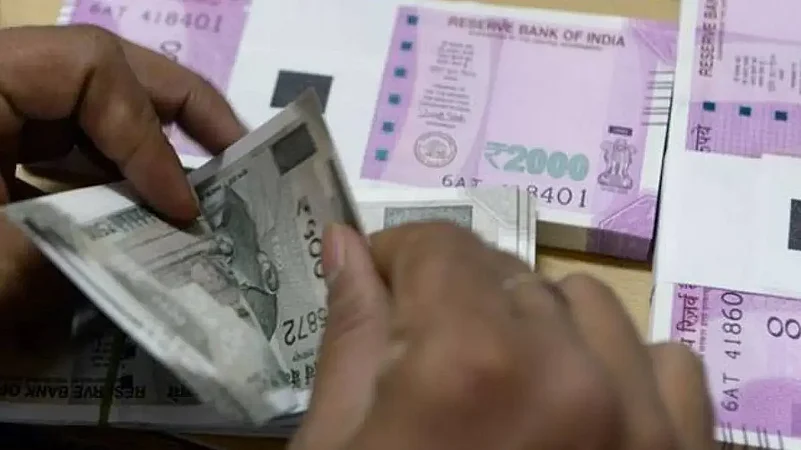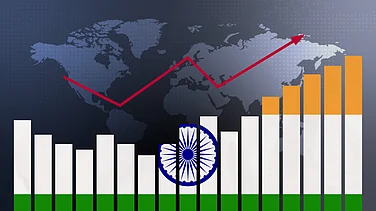With the Union Budget coming up, it is imperative to contextualise the employment-unemployment scenario in India in the post-Covid world.
The latest periodic labour force survey (PLFS) 2023–24 puts the all-India unemployment rate just below 5% of the labour force as per current weekly status (CWS). Labour force is defined as the sum of those employed and those currently looking for work—the unemployed.
Assuming the total population of the country is 145 crore, the labour force stands at 61 crore. The corresponding number of unemployed is about 3 crore. It is pertinent to note here that an individual is considered employed as long as s/he is available for work and can secure some work for at least one hour in any of the past seven days.
In this context, it is essential to understand their earnings to gauge meaningful implications for the world of work.
What the Labour Force Is Earning
An analysis of unit-level survey data (first visit) reveals 27.5% of India’s labour force, including the unemployed, the self-employed, the regularly-salaried employees and casual labourers earned less than Rs 3,000 a month or Rs 100 a day.
The average wage rate under the Mahatma Gandhi National Rural Employment Guarantee Scheme (MNREGS) is around Rs 300 a day (Rs 279 in 2023–24), or Rs 9,000 in 30 days.
Considering this as a benchmark, it is found that more than half (53.5%) of the labour force earned less than the MNREGS wage in 2023–24 in India. It is interesting to note that only 22% of the aggregate labour force in India could manage to earn more than Rs 15,000 a month or Rs 500 a day.
Nonetheless, it is often argued that the upper strata of the population is under-represented in the PLFS sample survey. In an attempt to adjust for this under-representation, we looked at direct tax figures.
According to the Central Board of Direct Taxes (CBDT), the number of direct tax payers in India was 10.4 crore in financial year 2023–24, which is less than 7% of the population or less than 17% of the estimated size of the labour force of India.
Since the exemption limit is of Rs 3 lakh per annum, or Rs 25,000 per month, and even if we assume that the entire 17% earns more than Rs 25,000 per month, the proportion of the labour force earning more than Rs 500 a day would not exceed 25%.
![Source: PLFS Data July 2023–June 2024 [Authors’ calculations from unit-level PLFS data first visit]](https://media.assettype.com/outlookbusiness/2025-01-30/iexvzks6/Labour-share.png?w=801&auto=format%2Ccompress&fit=max&format=webp&dpr=1.0)
The Rural-Urban And Gender Divide
There are also significant differences across gender and rural-urban areas. As high as 85% of the female labour force earned less than or equal to Rs 300 a day or Rs 9,000 per month in 2023–24 vis a vis 39% of the male labour force.
Across rural and urban areas, it was observed that more than 60% of rural and more than one-third of the urban labour force could be earning less than or equal to the average MNREGS wage rate.
The situation of rural females is even more precarious—as high as 91% of the rural female labour force earned less than or equal to Rs 300 a day vis a vis 64% among urban females part of the labour force, and 46% rural males and 24% urban males of the labour force.
![Source: PLFS Data July 2023–June 2024 [Authors’ calculations from unit-level PLFS data first visit]](https://media.assettype.com/outlookbusiness/2025-01-30/b0o2kvxo/Socioeconomic-makeup-of-people-earning-less-than-Rs-300-a-day?w=801&auto=format%2Ccompress&fit=max&format=webp&dpr=1.0)
Expectations from Union Budget 2025
Even if we segregate the data by type of employment, the situation is surprising—one-fourth of regularly-salaried employees, 43% of self-employed and 58.5% of casual labourers earn less than Rs 9,000 per month.
In this context, it can be argued that there is an urgent need for expansion of schemes like MNREGS in urban areas. It is also essential from the point of view of enhancing domestic demand at the aggregate level in a demand constrained situation in the face of falling growth, investments and profit rates.
The distribution of food grains through fair price shops is important for fulfilling the nutritional requirements for a majority of households. Further, provision of public funded quality health and education at all levels remains imperative so that out-of-pocket expenditure can be reduced for at least 75% of the labour force that is earning less than Rs 500 a day.
This is to say the social sector spending of the government needs to be enhanced. It has been argued time and again that this part of the world has one of the lowest levels of government expenditure on health and education as a proportion of GDP.
Since education and health are primarily state subjects, for the Centre to transfer resources to states plays an important role in human development of the country.
A more meaningful gender budgeting is also essential, given the high gender wage gap and the extremely low female labour force participation rate. We hope and anticipate that the Union Budget for financial year 2025–26 will address these concerns to achieve the sustainable development goals (SDGs) by 2030.
Das is assistant professor, Centre for Economic Studies & Planning, Jawaharlal Nehru University. Mishra is assistant professor at the Department of Management Studies, Ramanujan College, Delhi University. Views are personal





















